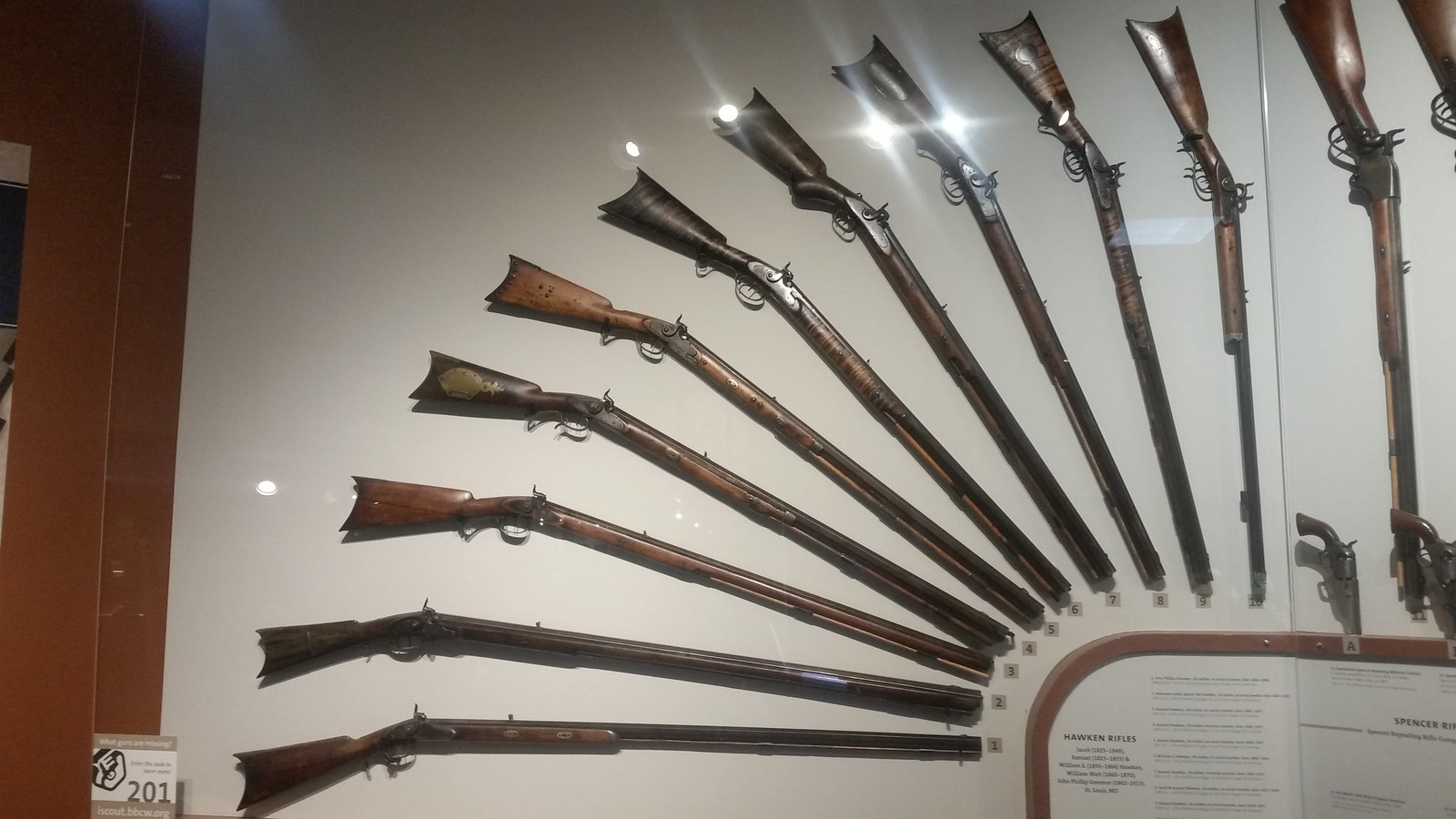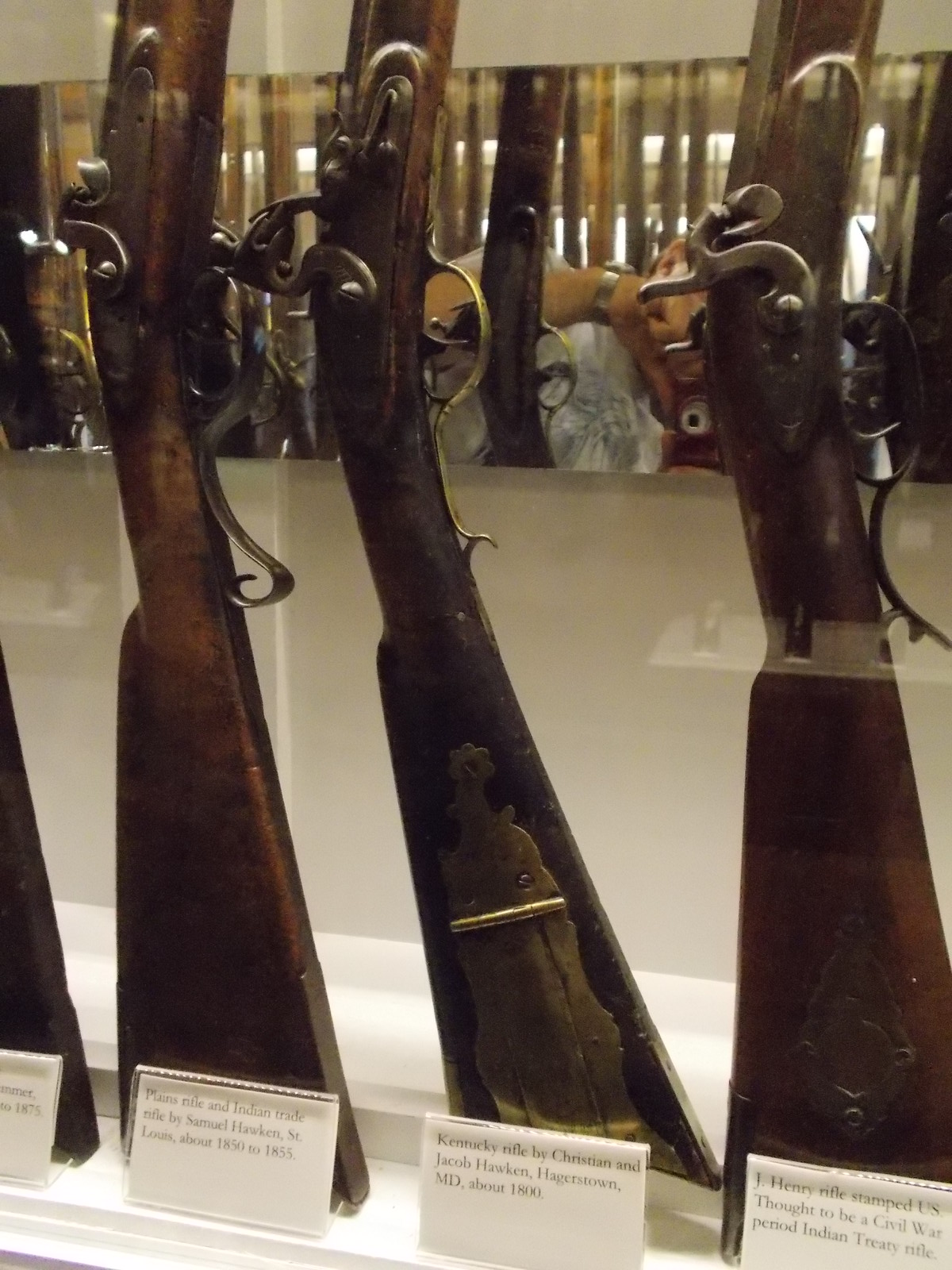I would just call it a Plains Rifle, though it does have, as Grenadier pointed out, some Hawken features.
With some judicious wood removal (forestock through wrist especially) could make it a very nice rendition of a fullstock flintlock "Hawken."
As some references to styles you mentioned:
Here are some original J Henry "Trade Rifles" for the Mountain Man Trade (middle two). You can see differences in the furniture. If the description plates at the bottom weren't there, you'd see the buttplates are different as well. Of course these are just a couple examples of rifles made for the mountain man trade.
Here are a number of original Hawken and I think some Hawken-like rifles in the Cody Museum. Note how much slimmer the wrist and lock areas are, which extends into the forestock. #3 is a Full Stock attributed to Samuel Hawken (if I'm reading my fuzzy picture in the word section) correctly.
Here are two more "Hawken" rifles. The one on the left is a "Plains and Indian Trade Rifle by Samuel Hawken, St Louis, circa 1850. The one to it's right is a "Kentucky" Rifle by Christian and Jacob Hawken, circa 1800, Hagerstown, MD! So just what is "a Hawken?"

Go back far enough and you're looking at Berks rifles from Reading, PA (of course the spelling was different and it was a different generation.)

Here's a neat little writeup on the Hawken brothers and their business.
Jacob Hawken (1786–1849) and Samuel Hawken (1792–1884) | Missouri Encyclopedia













